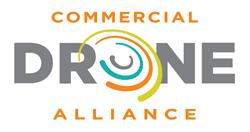The Commercial Drone Alliance and Association for Uncrewed Vehicle Systems (AUVSI) have released a reference document providing guidance to the commercial drone industry on staying compliant with the Federal Aviation Administration’s (FAA) UAS Remote Identification (RID) Rule.
The FAA’s discretionary non-enforcement policy for drone operators attempting to comply with the RID Rule’s operating requirements, but were unable to do so, expired on 16 March 2024. A similar non-enforcement policy applicable to the RID Rule’s manufacturer requirements expired in December, 2022. The RID Rule is now fully in effect and both manufacturers and operators should expect to see increased FAA enforcement of the Rule’s requirements.
RID is a digital license plate for drones and enables a drone in flight to broadcast identification and location information that can be received by other parties in the vicinity of where the drone is operating. Requirements for RID are set forth in Part 89 of the Federal Aviation Regulations and provides the FAA, law enforcement, and other federal agencies with a means to distinguish authorized drone operations from unauthorized drone operations that may present a safety or security threat.
The newly released document answers frequently asked questions surrounding the RID Rule and shares important information for both operators and manufacturers.
“Addressing safety and security is necessary in order to achieve scaled commercial drone operations,” emphasized Lisa Ellman, Executive Director of the CDA. ” Ultimately, industry RID rule compliance will enable communities across the United States to fully realize the safety, security, sustainability, public health, and equity benefits of drone technology.”
Michael Robbins, Chief Advocacy Officer at AUVSI added: “Remote ID harmonizes the needs of UAS operators and law enforcement stakeholders, and compliance is absolutely necessary for the secure and scalable integration of UAS into the airspace. By providing a resource that addresses our community’s questions around the rule, our aim is to support widespread commercial drone operations and the benefits they bring to the communities where they operate.”
For more information visit:
www.commercialdronealliance.org




